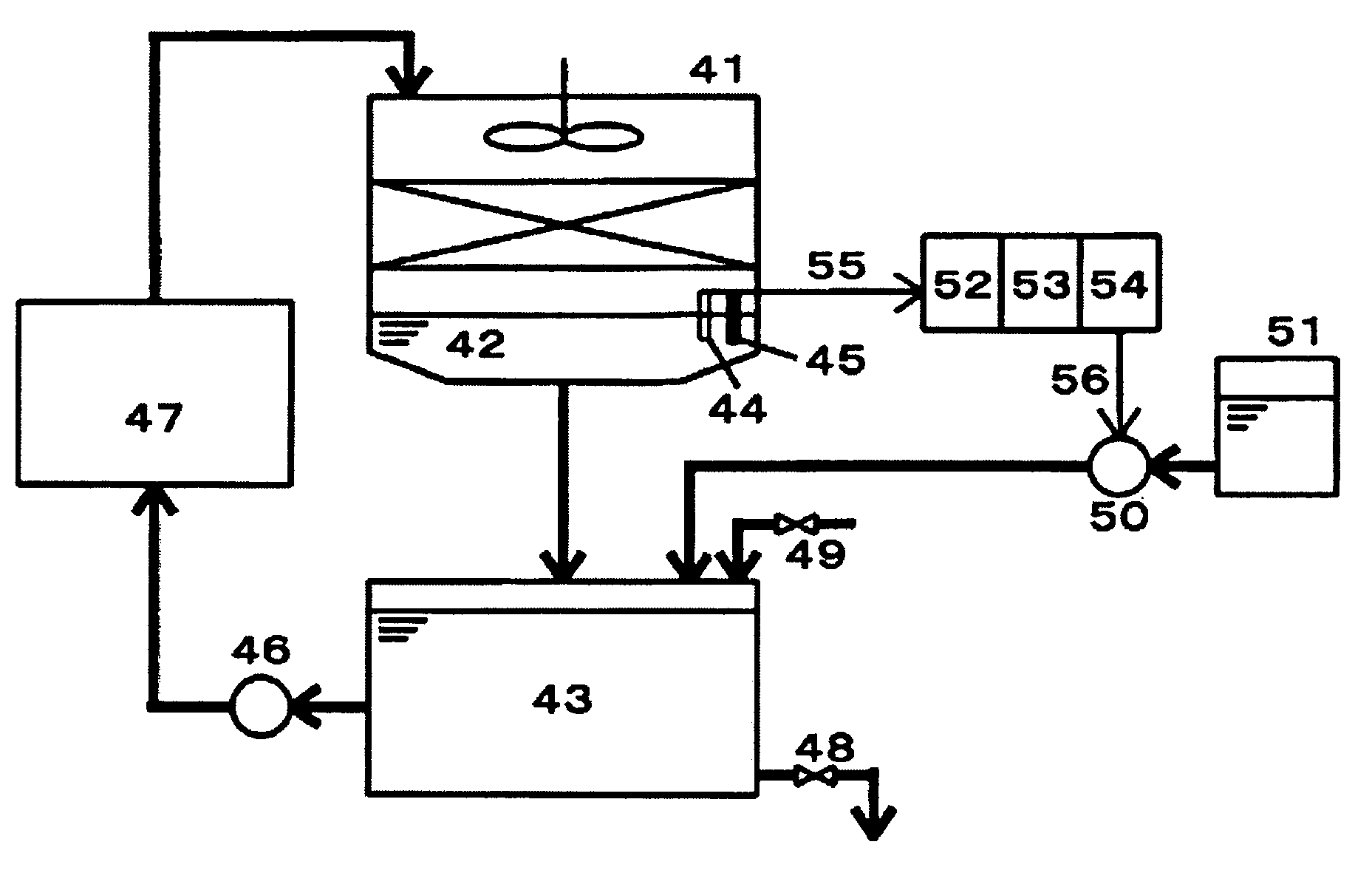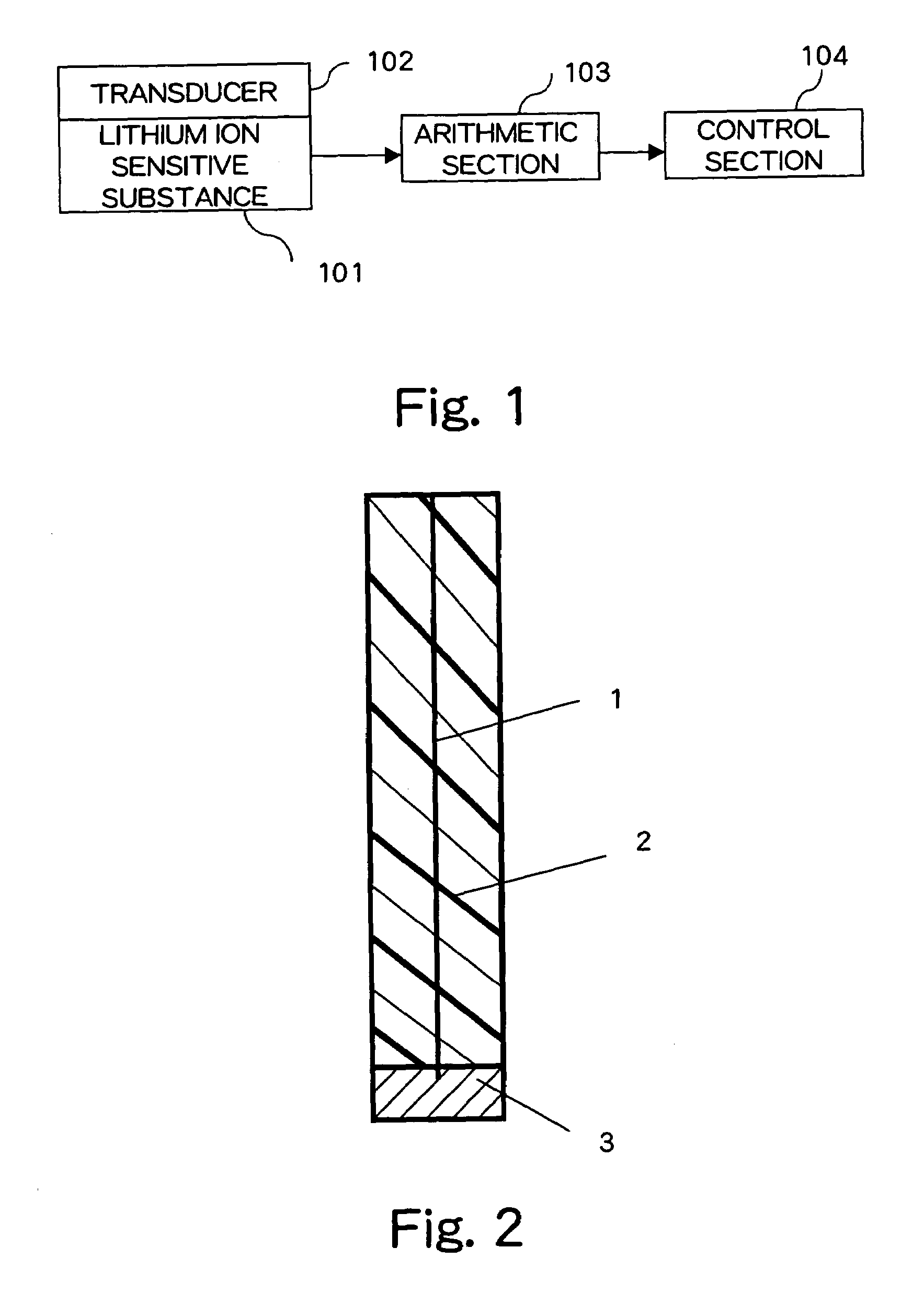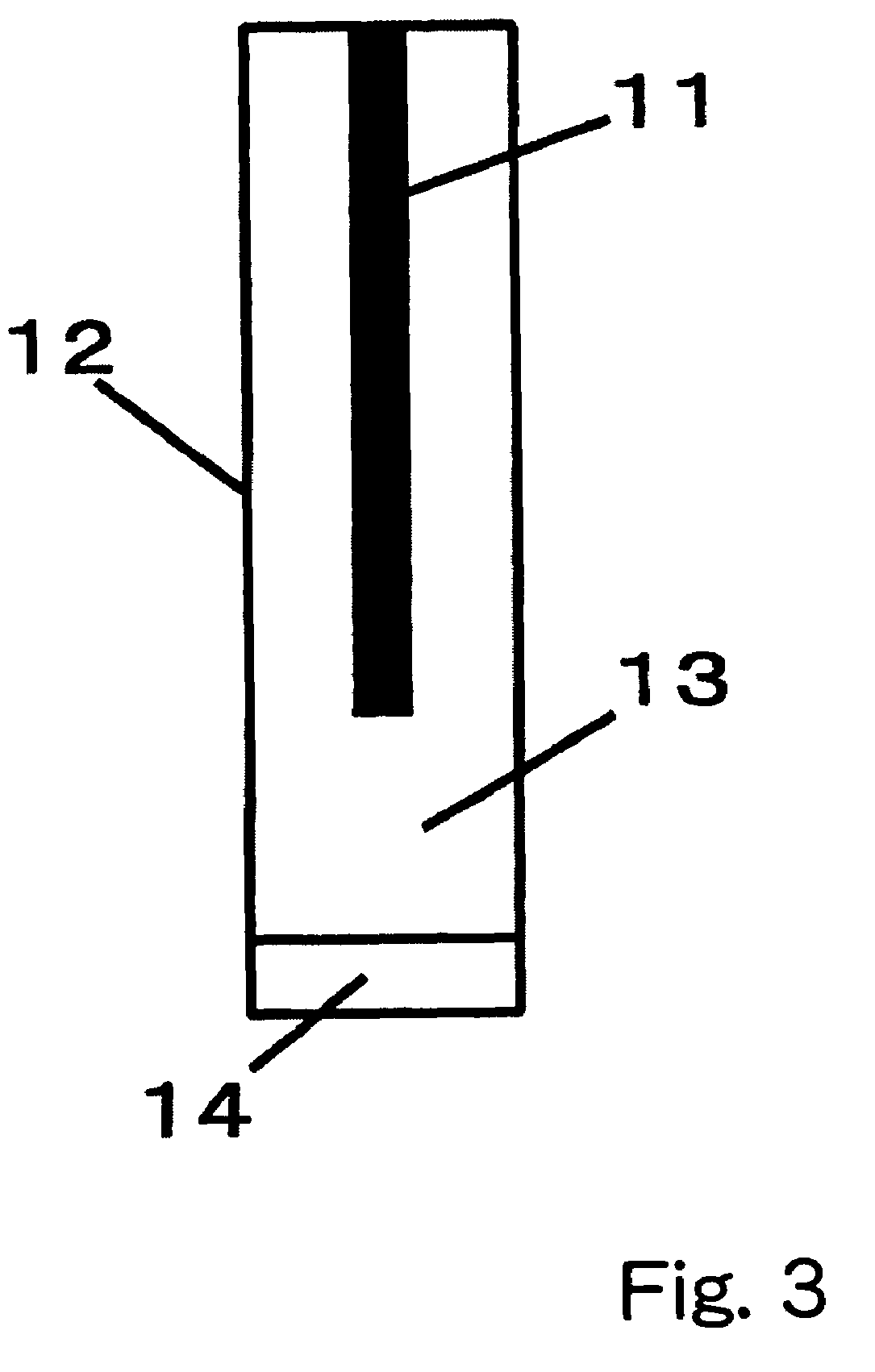Method and apparatus for controlling concentration of water treatment chemicals
a technology for water treatment chemicals and concentration, applied in the direction of fluorescence/phosphorescence, other chemical processes, water treatment, etc., can solve the problems of inability to measure the concentration of water to be treated, impractical methods for plant operation control, and substance is not easily decomposed by microorganisms, so as to achieve easy measurement
- Summary
- Abstract
- Description
- Claims
- Application Information
AI Technical Summary
Benefits of technology
Problems solved by technology
Method used
Image
Examples
example 1
[0082]In order to verify the effectiveness of the present method employing a lithium sensitive substance to measure concentration of lithium ions, an experiment was conducted in an open recirculating cooling water system.
[Open Recirculating Cooling Water System]
[0083]The operating conditions of the openreccirculating cooling water system used for the present experiment were as below.
[0084]Raw water: industrial water of Toda City, Saitama Prefecture, Japan.
[0085]Amount of water retained: 2 tons.
[0086]Recirculation Rate: 1 ton / minute.
[0087]Water temperature at the cooling water inlet of the heat exchanger: 25° C.
[0088]Water temperature at the cooling water outlet of the heat exchanger: 35° C.
[0089]The quantity of water equivalent to the amount of evaporated water and drifted water was supplemented using Toda City industrial water. The cycles of concentration was calculated using the ratio of electric conductivity values of the raw water (make-up water) and the cooling water, and contr...
reference case 1 (
Measurement Example Using a Lithium Ion Electrode Having a Sensitive Membrane Including the Compound of Chemical Formula (3))
[0100]Measurements of response potential values were made using a lithium ion electrode having a sensitive membrane including the compound of chemical formula (3), so as to determine whether the relationship between the response potential values indicated by the lithium ion electrode and the lithium ion concentration was dependent on the water cycles of concentration. As the subject of measurement, which corresponds to water to be treated, water samples were prepared by collecting water having varying cycles of concentration of 2, 5, and 10 from the open recirculating cooling water system, and adding thereto lithium chloride such that predetermined lithium ion concentrations were obtained. Response potential values were measured for the respective water samples, and the measured results were as shown in FIG. 9. As can be seen in FIG. 9, the behavior of respons...
reference case 2 (
Measurement Example Using a Lithium Ion Electrode Having a Sensitive Membrane Including the Compound of Chemical Formula (4))
[0101]A test almost identical to Reference Case 1 was conducted, while the lithium ion electrode including the compound of chemical formula (3) was replaced with a lithium ion electrode having a sensitive membrane including the compound of chemical formula (4). As can be observed from the obtained results shown in FIG. 10, in the region in which the lithium ion concentration is greater than or equal to 1 mg / L, the response potential gradient became close to the Nernst gradient regardless of the cycles of concentration of the water samples, and no influence from the cycles of concentration was observed when the lithium ion concentration was 2 mg / L or higher. In other words, when a lithium ion electrode having a sensitive membrane including the compound of chemical formula (4), which is one of the compounds denoted by chemical formula (1), is employed, and the c...
PUM
| Property | Measurement | Unit |
|---|---|---|
| concentration | aaaaa | aaaaa |
| concentration | aaaaa | aaaaa |
| concentration | aaaaa | aaaaa |
Abstract
Description
Claims
Application Information
 Login to View More
Login to View More - R&D
- Intellectual Property
- Life Sciences
- Materials
- Tech Scout
- Unparalleled Data Quality
- Higher Quality Content
- 60% Fewer Hallucinations
Browse by: Latest US Patents, China's latest patents, Technical Efficacy Thesaurus, Application Domain, Technology Topic, Popular Technical Reports.
© 2025 PatSnap. All rights reserved.Legal|Privacy policy|Modern Slavery Act Transparency Statement|Sitemap|About US| Contact US: help@patsnap.com



